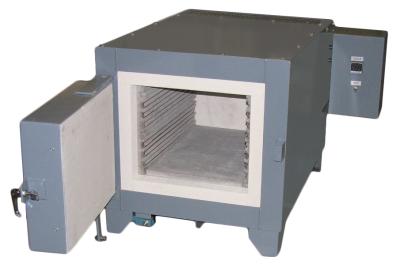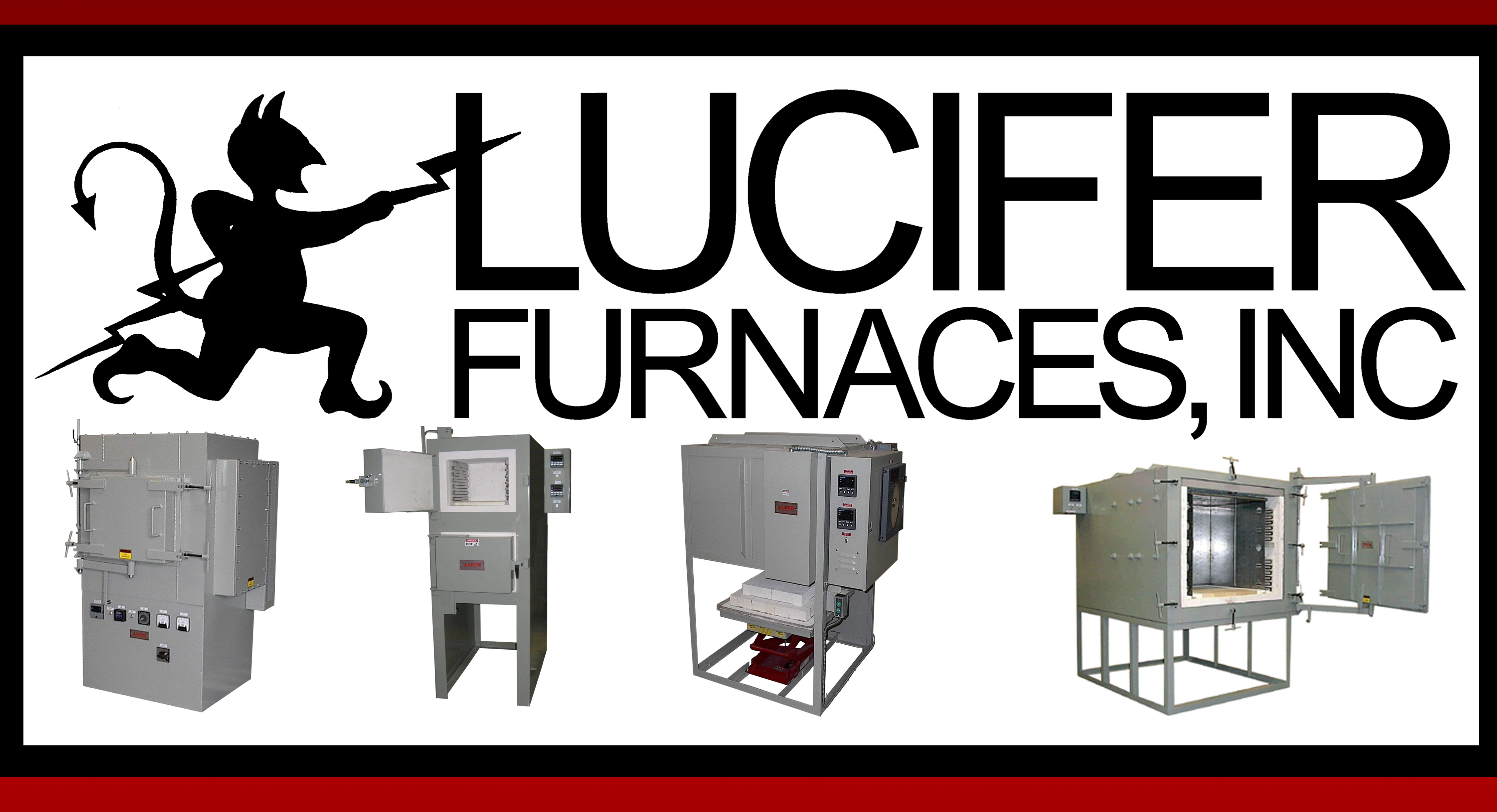
Lucifer Furnaces delivered a bench-style box furnace for batch heat treating small loads of low carbon steel. Model RD7-KHE24, with 7KW power, heats to 2,200° F with easy-to-replace wire wound heating elements in removable holders.
A horizontal swing door seals the 12”H x 14”W x 24”L chamber. A ceramic hearth plate supports the work load and protects the floor brick. The Honeywell digital temperature controller with safety microswitch and on/off main control switch are housed in a NEMA 1 side-mounted panel, and a rear-mounted Type K thermocouple senses chamber heat.
This Red Devil Series furnace is insulated with a combined 4 ½ inches of lightweight hotface firebrick insulation and coldface mineral wool. Refractory is dry fit and easily replaced.
Red Devil Series box furnaces can be fitted with optional accessories, including an over temperature safety system, gas spring vertical lift door and a base stand. An all-purpose general bench unit, Lucifer’s RD7 series can be purposed to various heat treating operations including hardening, drawing, tempering or annealing of steel. Red Devil Furnaces are completely wired, assembled, test fired and shipped ready for connection to main power supply.
Contact Details
Related Glossary Terms
- annealing
annealing
Softening a metal by heating it to and holding it at a controlled temperature, then cooling it at a controlled rate. Also performed to produce simultaneously desired changes in other properties or in the microstructure. The purposes of such changes include improvement of machinability, facilitation of cold work, improvement of mechanical or electrical properties and increase in stability of dimensions. Types of annealing include blue, black, box, bright, full, intermediate, isothermal, quench and recrystallization.
- hardening
hardening
Process of increasing the surface hardness of a part. It is accomplished by heating a piece of steel to a temperature within or above its critical range and then cooling (or quenching) it rapidly. In any heat-treatment operation, the rate of heating is important. Heat flows from the exterior to the interior of steel at a definite rate. If the steel is heated too quickly, the outside becomes hotter than the inside and the desired uniform structure cannot be obtained. If a piece is irregular in shape, a slow heating rate is essential to prevent warping and cracking. The heavier the section, the longer the heating time must be to achieve uniform results. Even after the correct temperature has been reached, the piece should be held at the temperature for a sufficient period of time to permit its thickest section to attain a uniform temperature. See workhardening.
- tempering
tempering
1. In heat-treatment, reheating hardened steel or hardened cast iron to a given temperature below the eutectoid temperature to decrease hardness and increase toughness. The process also is sometimes applied to normalized steel. 2. In nonferrous alloys and in some ferrous alloys (steels that cannot be hardened by heat-treatment), the hardness and strength produced by mechanical or thermal treatment, or both, and characterized by a certain structure, mechanical properties or reduction in area during cold working.

